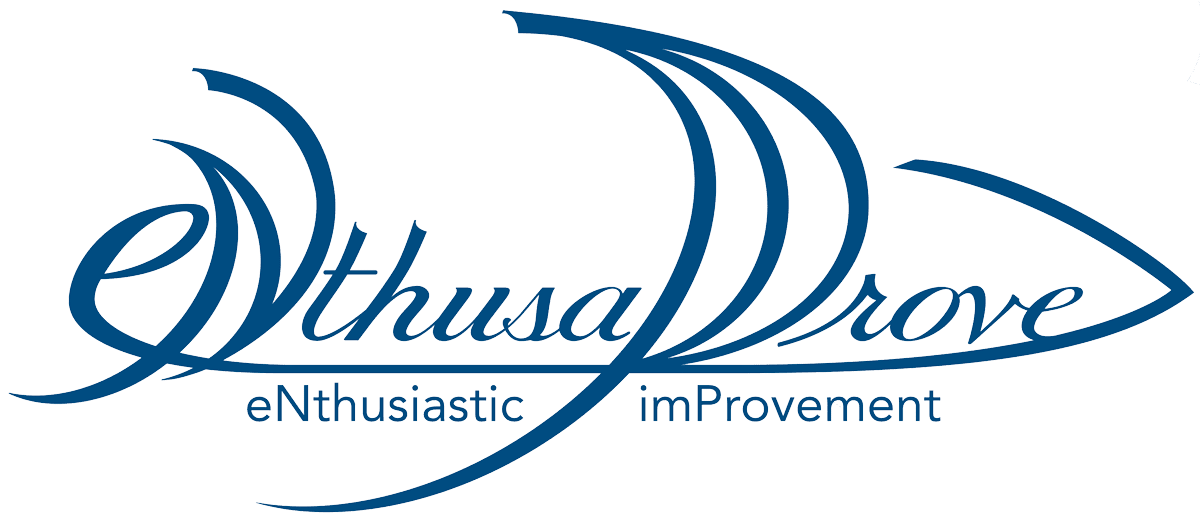Leading change. This world changes so fast it is hard to keep up most of the time. With all this change around us, do we change? How does successful change happen?
A Story about Brain Habits
We put up with a crazy faucet in my house for years. In order to get it to stop running it had to be pulled down, and then pushed up to the left. Sort of like shifting into reverse. It didn’t take long before this little motion became habit, even for close relatives. Then one day our faucet finally blew its o-rings a day before 30 guests were arriving, so I fixed the faucet. No need to shift into reverse anymore. What did we find? Now we naturally do the reverse shift motion which turns the faucet on, even 5 months after I fixed the faucet.
I tell you this story because of a different story, a video actually, that makes us think about making changes in life and work. In the video, Destin, an engineer, is given a bike by some practical joking machinists who modified the bike so that turning the handle bar to the right, the wheel turns left. No big deal, right?
You think it won’t be that hard to ride, well, you’re wrong. You see, what we long forget is how darn complex bike riding really is! And, once we know, all that complexity is deep tacit knowledge. You’d think that we could easily just tell ourselves on this weird bike to just do the opposite of what we’re used to. We KNOW how to do this. But guess what, we don’t. We understand what we need to do, we just don’t know how to do it. It’s too tacit. It’s too ingrained.
Why is Change Hard? It can be because of the type of knowledge
What do we learn from these faucets and bikes? One lesson is that tacit knowledge, that type of knowledge I like to call “knack,” is really hard to change. It is the type of knowledge that knows how to ride a bike. Explicit knowledge is writing a manual on how to ride a bike, or even doing a how-to video. Taking in the instructions, written or video, are unlikely to cause you to ride a bike well when you first get on. We each have to develop our own tacit knowledge.
In our teams, even if you’ve gotten past the “I don’t want to change” whining stage (and there usually is some), that doesn’t mean that folks will be able to change quickly. They are having to learn new muscle memory to “ride a backwards bike,” so the tacit knowledge has to be retrained. And guess what…as you’ll see in the video, but as you probably naturally know…that’s downright frustrating…and takes time…and patience…and…I just don’t have the energy, patience, belief, or time to do that!!!
- Knowledge: Explicit Knowledge. It sounds like:
- “I can document how it is done.”
- “I know WHAT to do.”
- Understanding: Tacit knowledge. It sounds like:
- “I can do it!”
- “I know HOW to do it!”
Making Change Real: Practice
In order to make a change, we have to practice the new process, skill, or method. Learning from a PowerPoint lecture is not going to make any of us proficient. Tacit knowledge is almost completely non-transferrable. How do we share it then? Leading others through experiences to develop their own tacit knowledge.
Team Leaders, this is one place where beta or prototype testing or trials come in handy.
It gives the folks for whom the change will be part of their new life a way to not just work out the bugs of your new process or program or whatever…it gives them a safe space to re-train their muscle memory. In short, to build that new tacit knowledge.
When they do, they get to vent their frustrations onto the new process or widget. You and your team may not like the verbal abuse that your cool idea is having to live through, but at least that’s a sign that someone is making an effort to adapt and change. And that is good.
Designing Practice Ground
We at eNthusaProve love to design these experiences to build tacit knowledge on teams going through change. We’ve helped teams transition understanding to knowledge through using salsa, hoagies, puzzles, bowling, and scavenger hunts. These are particularly helpful to practice:
- team skills (e.g. communication, trust, listening, and delegation)
- process understanding (e.g. backlog and process capability)
Here’s the basic rules we use when we create these practice fields for our clients:
- Make it a game that makes the team work better together in order to gain points (rather than creating adversaries, which is natural for most games).
- Simulate the real work dynamic in a different situation. This could be a reporting structure, or how the teams are setup, or the process (assembly line, spoke and wheel, or craftsman).
- Ratchet up the difficulty as people become more proficient.
The most crucial part of these exercises is helping people see what they just accomplished. Even though it isn’t the same as parents praising a child who just rode a bike, Team Leaders need to do the same thing. Praise and encourage the efforts.
As facilitators, this is the most important part of the job, being able to show the team what they did, how it applies to their work, and how the skills are transferrable.
If this is something that could be helpful for your team, drop us a line and we will be glad to help you out!
The Change Journey isn’t a Single Hill
I have found that down deep, not even a faucet can change the behavior of this engineer. Tacit knowledge, our know-how or knack, is very hard to modify. Destin showed that in learning to ride the backwards bike, I relearned it again with my crazy faucet that I’m still shifting into “reverse.” Just remember to be patient down the road when someone is still shoving that faucet into reverse, when it seems like they should know better by now.
Change is a process, it takes time and retraining. Keep with it, it will be worth the trip!





